Audeze Euclid Review - Right direction, room for improvement
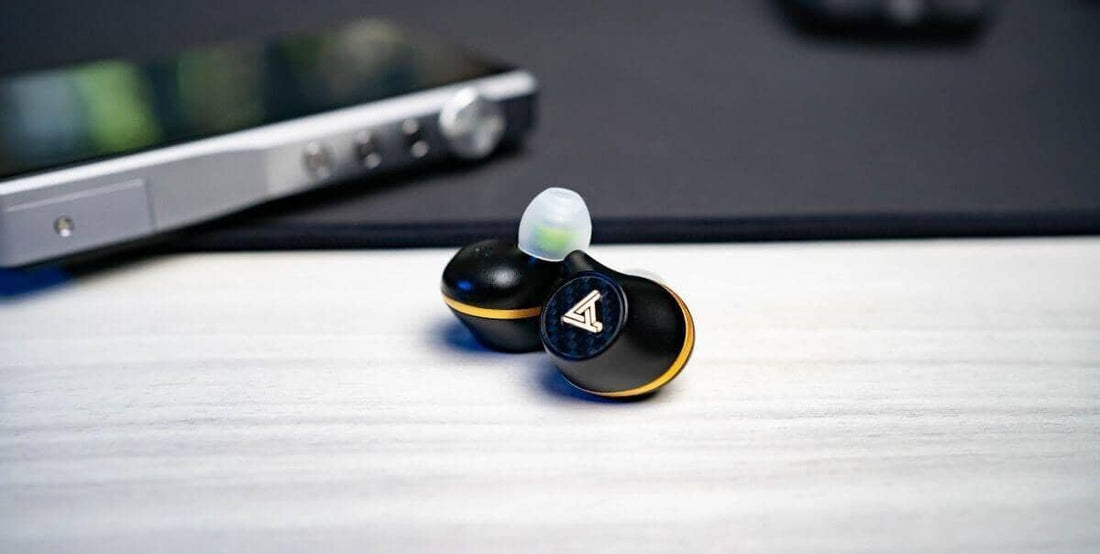
Review written by @Resolve
Review unit provided by Audeze for evaluation.
Introduction
This review has been a long time coming, but it’s in part because of how Audeze’s latest closed-back planar IEM has challenged my existing outlook on planar tech in IEMs in general. After having reviewed some of their other in-ear releases, like the LCD-i3, with somewhat of a mixed opinion on them (loving the technical performance but not being too thrilled about them being open-back with my use case for in-ear headphones), the prospect of a closed-back version is really exciting. At the same time, I’ve heard a number of closed-back planar IEMs like the RHA CL2 Planar as well as the Tin HiFi P1 and P2, and indeed even the open-back ones from Audeze, and it seems like getting the tuning right for this kind of tech in an IEM is a real challenge.
The following is an evaluation of the Audeze Euclid closed-back planar magnetic in-ear headphone, which comes in at $1300. It's a steep price to pay, but I think it’s also important to remember that what’s been done here is somewhat unique within the landscapes of in-ear headphones in general. Not only is this tech more difficult to tune than typical balanced armature, hybrid or tribrid designs, but closing off the shell on a planar is a challenge that so far no company has done without some compromises or tuning quirks. So without further ado, let’s take a look at Audeze’s recent attempt to do so.
Specs
- Style - In-ear, closed-back
- Transducer type - Planar Magnetic
- Transducer size - 18 mm
- THD - <0.1% @ 100 dB SPL
- Sensitivity - 105 dB/1mW (at Drum Reference Point)
- Impedance - 12 ohms
- Max power handling - 500mW
- Min recommended power - > 50mW
- Wired connection - Braided MMCX
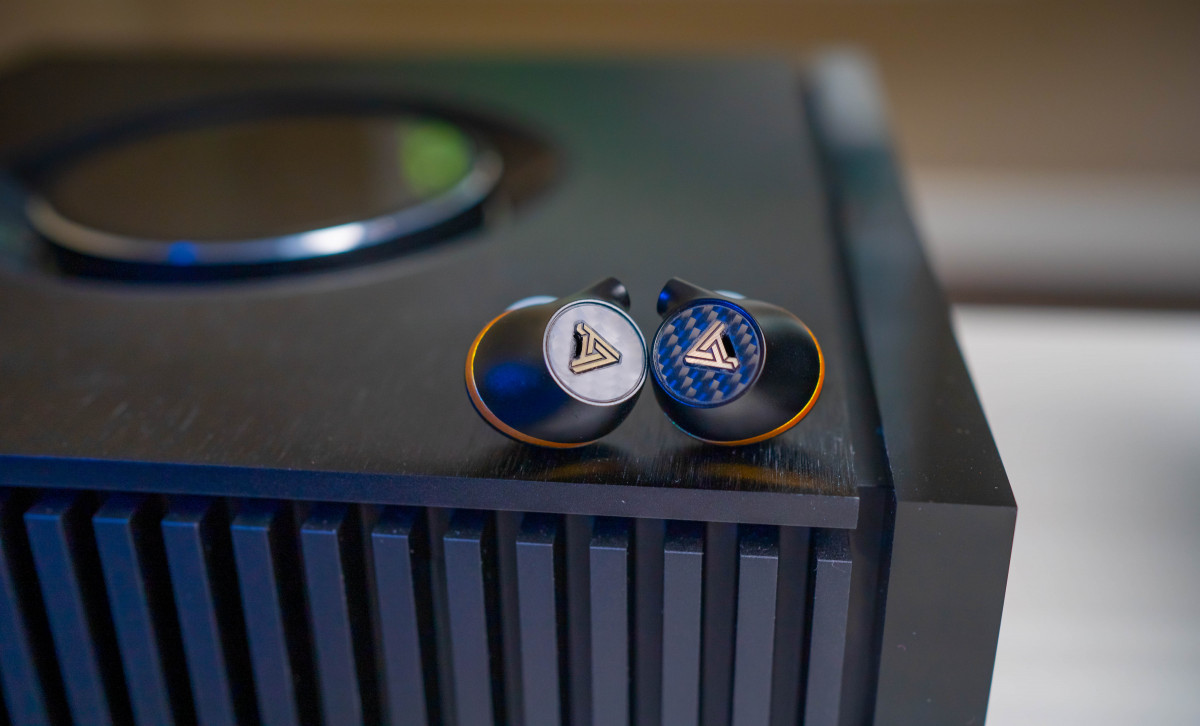
Accessories, Build, Comfort
The Audeze Euclid is a large, somewhat bulbous closed-back IEM. I say ‘closed-back’ because this is a departure from Audeze’s typical open-back iSine in-ear planar designs. The housing is made of milled aluminum and feels solid with good materials. It should be noted, however, that the carbon fiber faceplate can scratch quite easily, so listeners should take care when packing them into the provided plastic hard shell carry case.
The Euclid is also reasonably comfortable to wear - at least for my ears. Although it doesn’t have a class leading cable, like what we’ve seen from Dunu on a number of their IEMs, the Euclid’s cable is still decent. It’s functional, not particularly microphonic, and doesn’t get in the way. Of course, the Euclid also includes a number of tips (Comply, Spinfits, and Silicone), and tip rolling does have a moderate effect on tonal balance, but nothing that significant. My favorite tips of course are the Dekoni foam tips (not included), but the ones included do just fine as well.
For anyone wondering, if you want to impact the tonal balance the most, you could try Final E tips, which have a tendency to reduce the mid-treble and control the bass a bit - not something I found the Euclid needed really. Additionally, I’d caution listeners that the Comply foam tips may be the most comfortable, but many (myself included) have reported that they also have a negative impact on technical performance to a small degree.
Sound: Objective
The Audeze Euclid has a noticeably unique frequency response, and there are definitely some oddities that stand out - and the experience compared to similarly priced competitors is that of a somewhat ‘colored’ presentation. At the same time, when evaluating the Euclid against other planar magnetic transducer IEMs like the Tin HiFi P2, the RHA CL2 Planar, and Audeze’s own LCD-i3 (and iSine series), it becomes clear that meaningful strides have been made when it comes to tuning and implementing this type of technology. But let’s go through the tonal balance now, looking at both the Euclid’s positives and negatives.
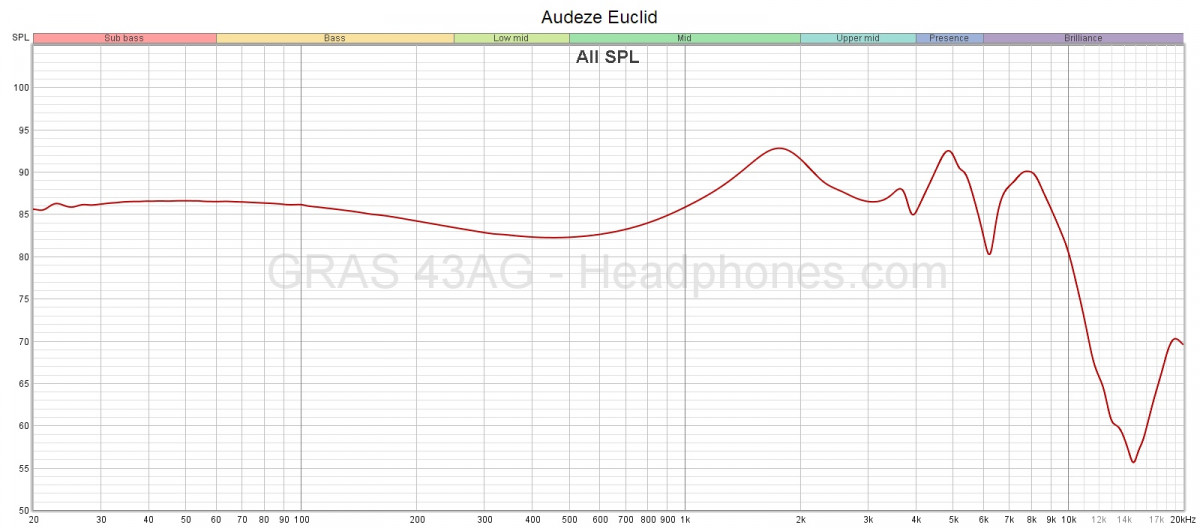
Here's how the Audeze Euclid measures on the GRAS RA0402 ear sim. Measurements done on this rig are not compatible with measurements done on the RA0045 equivalents that are commonly found because those don't have the 8khz coupler resonance damping. The RA0402 is not necessarily more accurate but it is more readable.
Bass
The Euclid opts for a fairly ‘safe’ bass tuning, and by that I mean it has a bass shelf that doesn’t elevate to basshead levels, but still sits at a level that’s comparable to other classically ‘neutral’ IEMs. I think one minor complaint might be that the bass shelf extends a bit far into the upper bass, adding some slight bloom around 150hz, but it’s subtle enough that it doesn’t intrude too much on the mix. Imagine a bass level that’s generally normal, with a slight emphasis towards ‘boom’ and warmth rather than ‘thud’. But make no mistake this is not an overly bassy IEM.
Mids
For the mids, here’s where we get to some of the weirdness. The region just before 2khz (around 1.8khz), is significantly pronounced. This causes a touch of ‘honk’ and shout to the presentation - particularly with vocals. This is also made more noticeable in large part due to the unevenness in the upper mids. In short, there’s a moderate harmonic imbalance in the midrange that keeps the Euclid from being as clear sounding as other competing IEMs in the price range.
Treble
The treble is also another place that’s got appropriate presence overall, but lacks some coherency with a pronounced 5khz peak and a bit of roll off in the upper octaves. I should note that I’m particularly sensitive to 5khz issues, in part because I used to play drums, and a boost in this region has a tendency to tonally compress percussive hits. This is because it elevates one particular harmonic overtone above the rest of them, throwing off what is typically a delicate balance. In the Euclid’s case, it’s a very minor effect, likely due to a slight boost to the mid-treble around 8khz that seems to overshadow the issue.
These additional features of the treble also serve to somewhat balance out the rest of the tuning in the mids with the elevation around 2khz. So there is a sense in which this tuning sort of works for certain recordings. It’s only when I scrutinize percussive timbre in my jazz tracks that I start to notice these issues.
Tuning Summary
The bottom line for the tuning is that while it sort of works, it lacks a bit of internal cohesiveness for various different frequency ranges and can certainly be improved upon. With that being said, all of the respective ranges are at an appropriate level on a more zoomed out scale, so it never feels like anything is muffled, bright or massively out of whack.
More importantly, the Euclid is also much better tuned than any of the previous planar IEMs I’ve evaluated, and so while it’s not perfect for my preferences, this does represent a step in the right direction for this technology in IEMs.
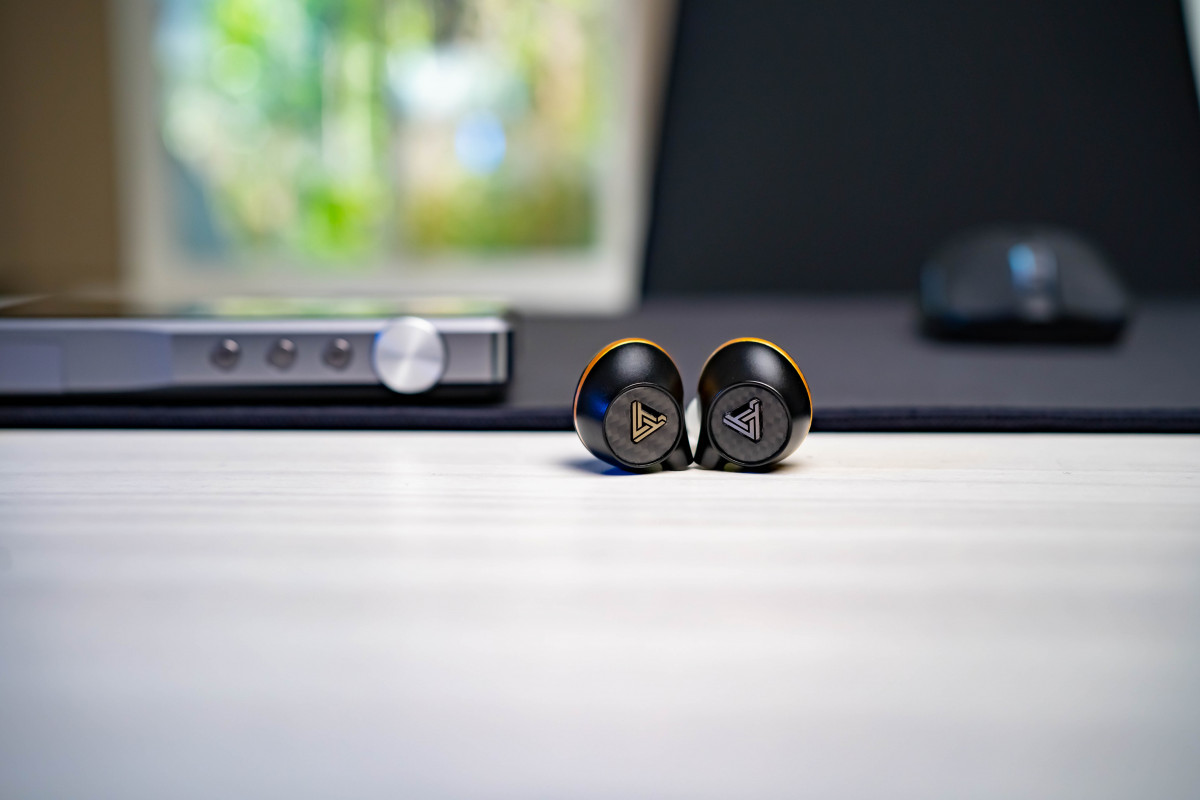
Sound: Subjective
There’s a lot of interesting tech that’s gone into the Audeze Euclid, like Audeze’s Fazor waveguide and the N50 Fluxor magnets. But what I had been most interested in is the achievement of closing off a planar magnetic IEM. Being somewhat familiar with Audeze’s LCD-i3, and its technical strengths, it’s worth asking the question of how does closing off the IEM impact these strengths?
Microdynamics
Microdynamic resolution and detail for trailing ends of tones is probably the Euclid’s biggest strength. I don’t hear any meaningful blunting to the small gradations of volume, and everything that should be there in the music really is there and clearly represented. I find it interesting that for this quality, it seems that any transducer type is able to perform well, but there is still something unique about the way a planar IEM achieves this as opposed to the way a balanced armature based IEM achieves it. Perhaps that’s more related to timbre, but there is a kind of ‘sharpness’ to the Euclid that I don’t quite get from other tech. It’s a desirable quality in my opinion.
Macrodynamics
One of the Euclid's notable shortcomings is that it doesn’t punch particularly hard for macrodynamic impact. For anyone unaware, this quality isn’t directly correlated with measured bass response, but seems to be related to other qualities that remain heretofore unexplained. But in short, hybrids or tribrids that use dynamic drivers in the bass - and indeed single dynamic driver IEMs typically punch harder, irrespective of their actual bass level. So far it’s been common to think of pure multi-BA setups as somewhat inferior in this regard (with some exceptions), and I find the Euclid to land squarely in the more lackluster camp for this quality as well. The tradeoff here is for the benefits of tightness and control during busy passages - even in the bass.
Space & Separation
Another area where the Euclid shines is in the sense of space, separation and layering. This is also where planars typically have a significant advantage, and the Euclid is no exception. Image isolation is exceptional, and if this sounds unfamiliar to you, imagine you’re listening to a vocal harmony, with the Euclid you’re able to hear each individual line of the harmony more clearly than with other IEMs around this price. The overall sense of space is also impressive, and that may be aided somewhat by the uneven midrange. It’s a tradeoff I don’t typically prefer, but for those who want a large soundstage in an IEM, the Euclid certainly delivers.
Timbre
Those who care a lot about a ‘natural timbre’ should probably look elsewhere. Not only does the Euclid have a somewhat affected sense of tuning-related timbre to it, particularly with the 5khz peak, but there is also a distinctly ‘planar’ character to the overall presentation. That is to say, it’s got a more artificial presentation than I’d ideally like, but it’s also not the smeared or strained effect you sometimes get from multi-BAs.
Comparisons
Tin HiFi P2 - $370
The P2 has some of the craziest treble in any IEM ever - and I mean that less as a point of complaint, and more as a curiosity about how this was even possible. Where the Euclid lacks air up top, the P2 has WAY too much energy above 8khz, to the point of being borderline unlistenable for me. In that sense, the Euclid easily has the better default tuning between the two - and this just goes to show how tuning a planar IEM is quite difficult. Importantly, the Euclid also has noticeably better technical performance, as we might expect from a much more high-priced product. But where the P2 leaves me feeling a sense of “why planar?” the Euclid makes me feel “this is why planar”.
Thieaudio Clairvoyance - $700
In some respects the Euclid has better technical performance than the Clairvoyance, apart from macro contrast and dynamic punch. Specifically when it comes to image separation and sharpness for trailing ends of tones, the Euclid sounds superior to me. With that said, I do still find the Clairvoyance to be a generally better sounding IEM. This is in large part due to the Clairvoyance’s excellent frequency response and tonal balance - an area that is simply better than that of the Euclid. Which one is better overall will depend on how much the listener cares about technical performance and how much they care about tonal balance. But in short, the Clairvoyance's frequency response is much closer to the kind of tuning you want in an IEM.
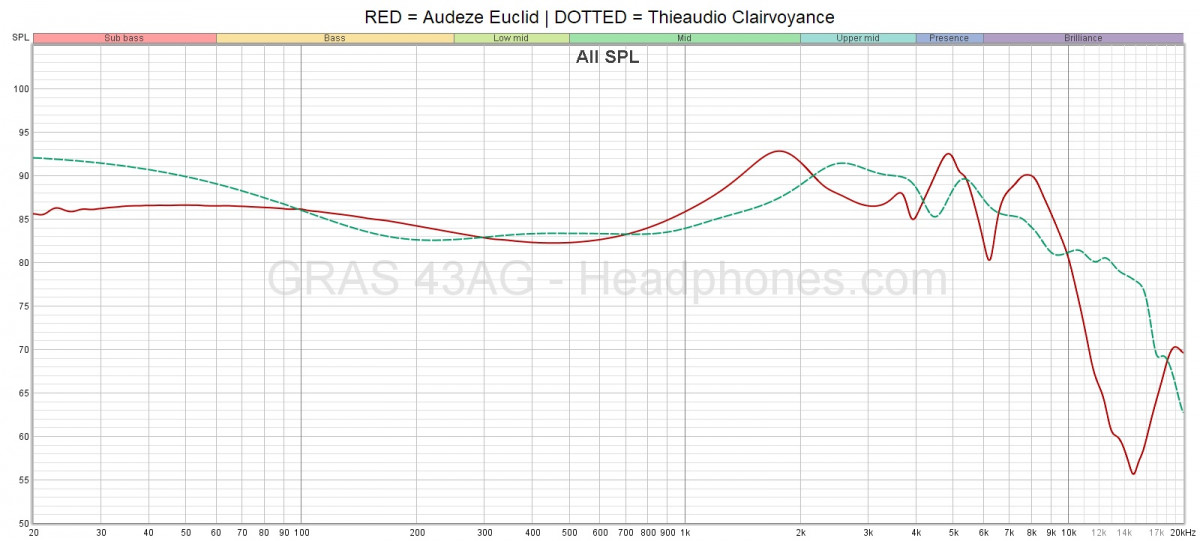
Campfire Andromeda 2020 - $1100
The Andromeda 2020 is very competitive for its sense of detail and space in an IEM, and on that front I find it to be the multi-BA counterpart to the Euclid. However the Euclid is definitely tighter and more well controlled in the bass, and once again the Euclid’s separation qualities are perhaps slightly more desirable. On the other hand, the Andromeda also has a more generally agreeable frequency response and tonal balance - being a bit more laid back, a bit warmer, and generally more pleasant overall.
Conclusion
My conclusion is going to be a somewhat nuanced one. On the one hand, Audeze has achieved a remarkable feat in closing off a planar IEM, and I really do think the Euclid is one of the better sounding planar IEM I’ve heard so far. Add to that the exceptional technical performance for detail and separation qualities, and things start to look quite good for the Euclid. On the other hand, the bar for planar IEMs isn’t particularly high - especially closed-back ones, and so the tuning still could use some work and refinement. Compared to other less expensive hybrid and tribrid IEMs, the Euclid’s tonal balance simply isn’t all that competitive.
Still, I’m going to give it a cautious recommendation to anyone looking specifically for a planar IEM, and for those who care more about raw performance and detail than tonal balance and timbre. In part, the Euclid is more about new and exciting tech than the resultant experience for the listener in a hyper competitive landscape. Sure, there are many IEMs at lower price tags that have better and more cohesive tunings. But if you love that planar sound, as many do, then this should be near the top of your list to try.
-@Resolve
---
Discuss the Audeze Euclid on the HEADPHONE Community Forum.
---
